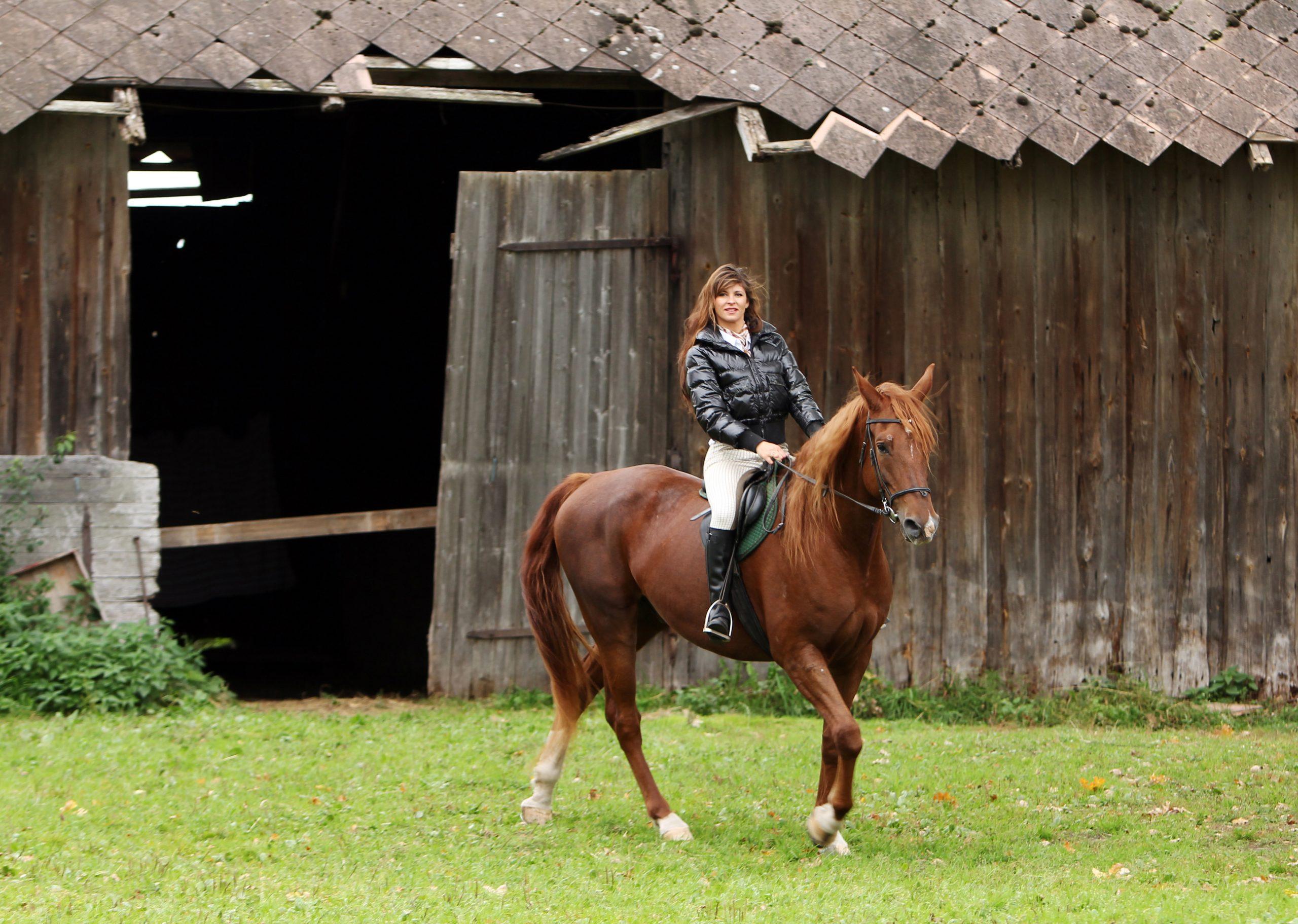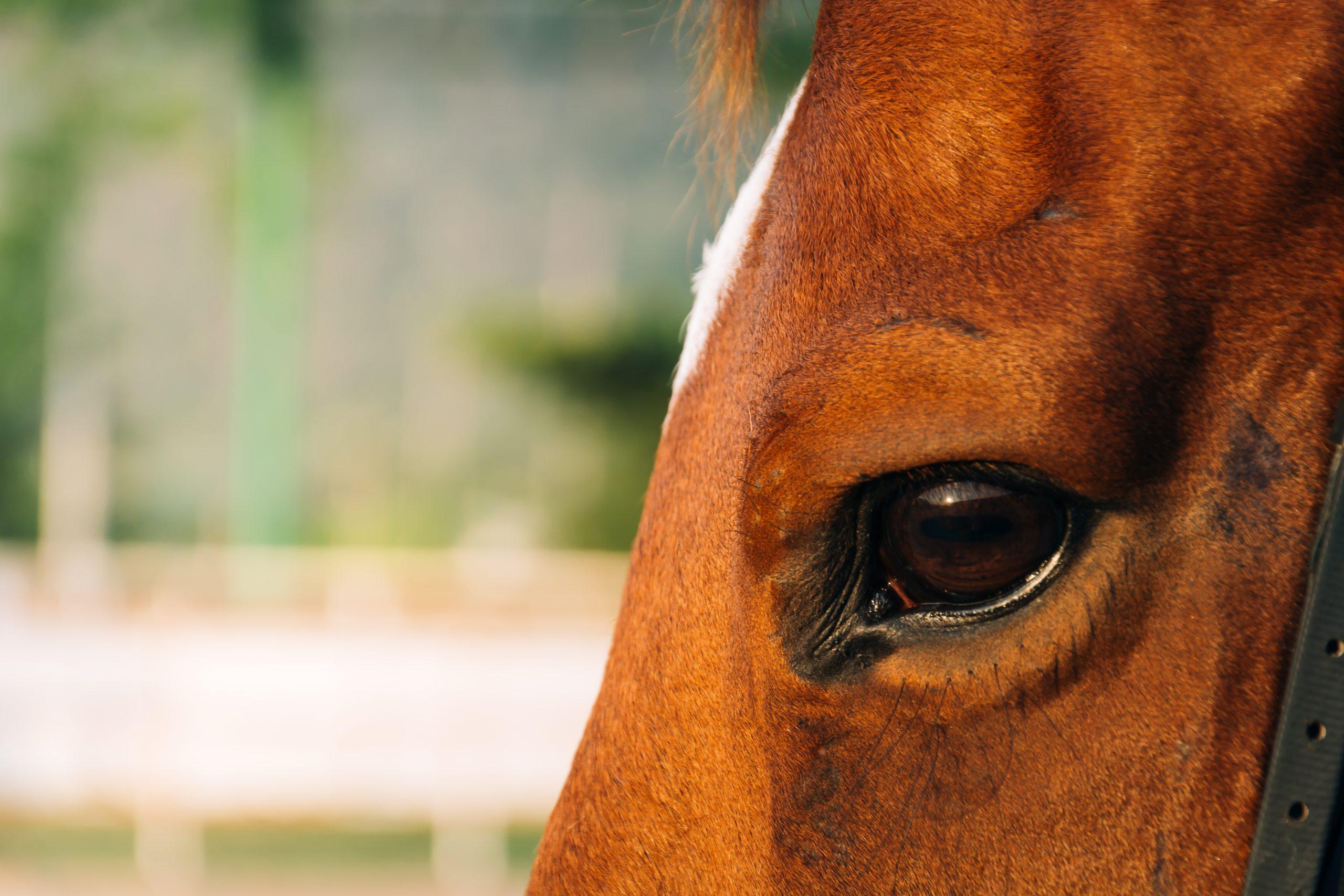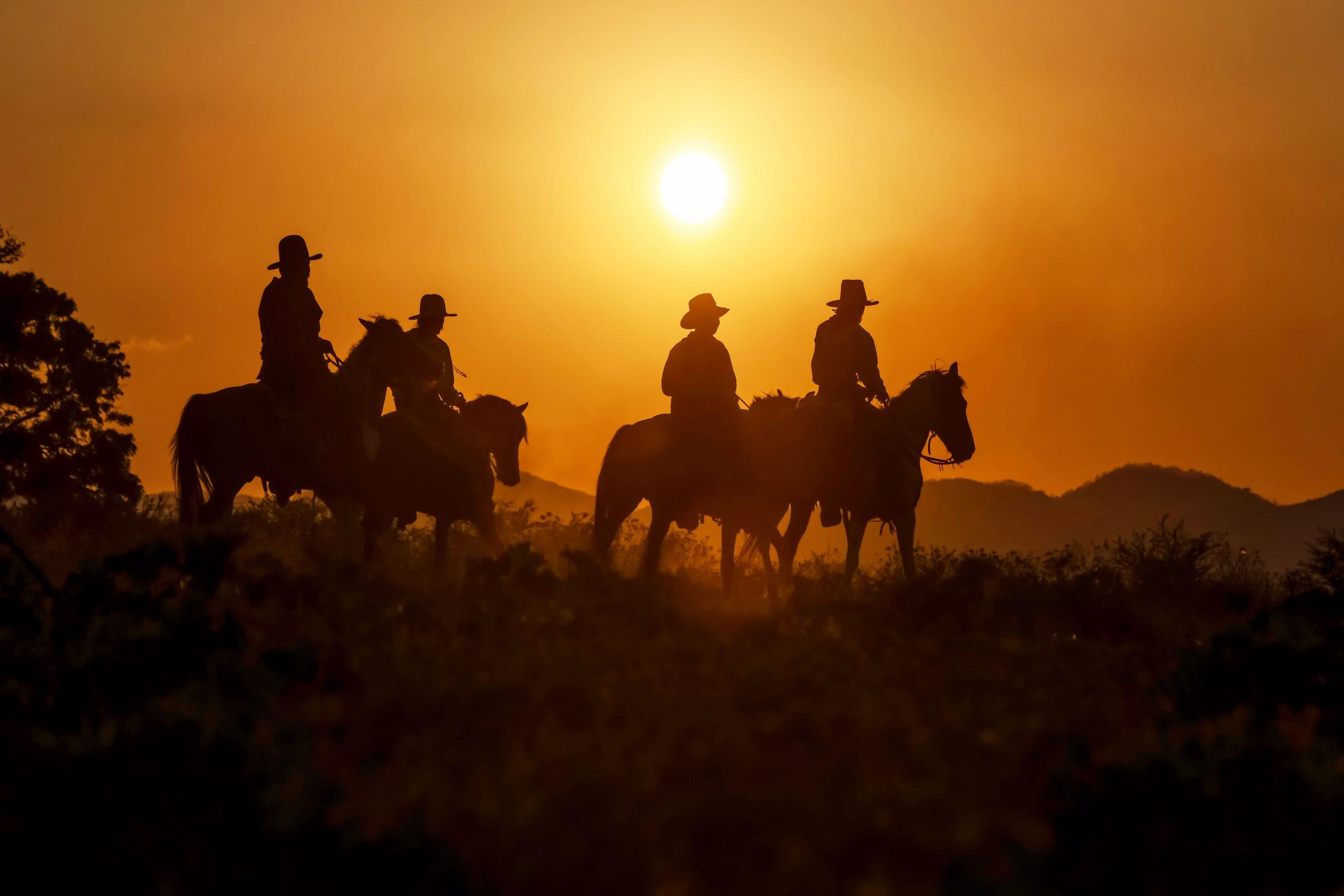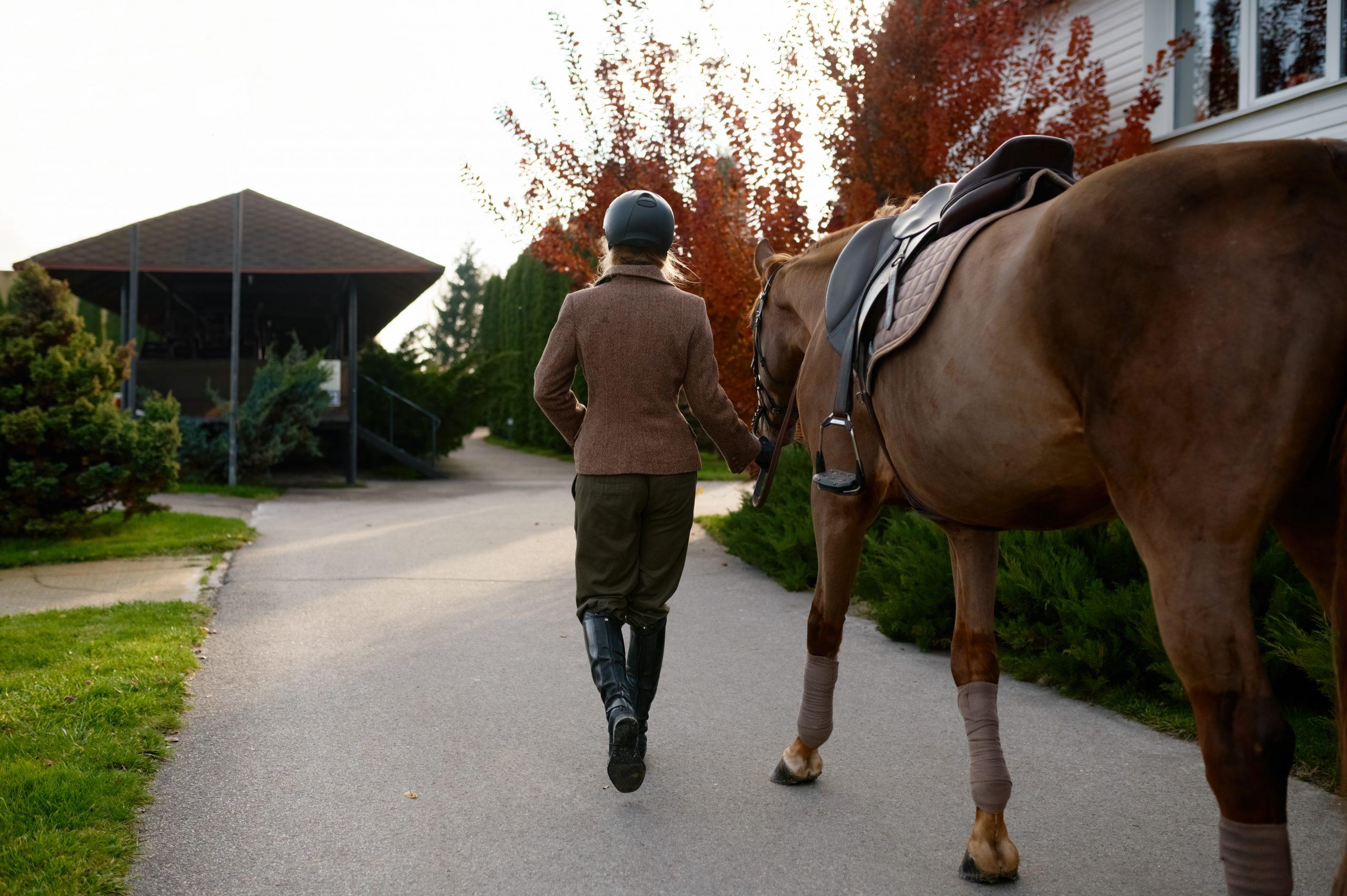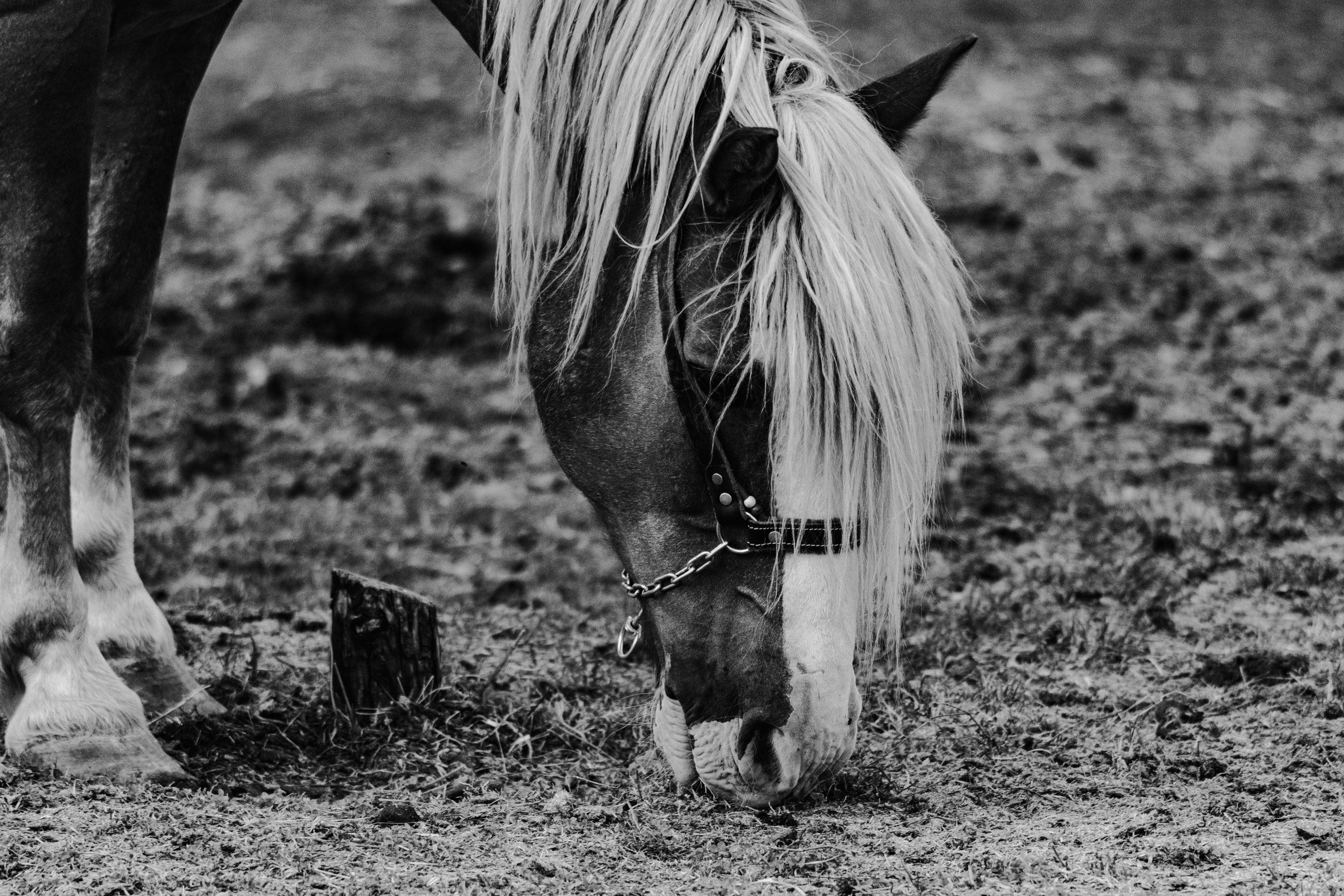Introduction
To understand horse riding and its safety levels, you need to start with the basics. In order to do so, this introduction provides a brief overview of horse riding as well as its accidents. You’ll also get an insight into the definition of horse riding, followed by a look into the accidents that occur amid the challenging sport.
Definition of horse riding
Horse riding is the act of directing or controlling a horse while mounted on its back or through other means. It involves maintaining balance and coordination with the horse’s movements to walk, trot, canter or gallop. The rider must have good communication with the horse and be able to understand their signals.
To become proficient at horse riding, one needs proper equipment such as a saddle and bridle and consistent practice to develop physical strength, balance, and flexibility. The proper care and maintenance of the horse are essential for both their health and safety.
Horse riding offers several benefits, including improved physical fitness, building confidence, developing patience and discipline, providing stress relief, improving social skills amongst many others. It is an activity enjoyed by people of all ages from recreational riders to professional athletes.
To enhance your horse-riding experience some suggestions include; wearing appropriate gear such as helmets and shoes specifically designed for horse riding which provides comfort while keeping you safe on the trails. Also, finding an experienced trainer who will provide the right guidance tailored to your skills and goals can be helpful in achieving success on your journey.
Horse riding accidents: where the phrase ‘horsepower’ takes on a whole new meaning.
Brief overview of horse riding accidents
Horse riding accidents remain a prevalent problem in the equestrian world.
Data suggests that these accidents can result from a variety of factors, including rider experience, faulty equipment, and certain horse breeds. The consequences of these accidents can range from minor injuries to fatalities, underscoring the importance of adhering to proper safety measures.
Staying vigilant and taking precautions while interacting with horses is crucial in preventing accidents. Wearing appropriate protective gear and being knowledgeable about equine behavior are among the measures riders must consider before getting on a horse. Additionally, maintaining equipment to ensure it functions correctly is critical to prevent malfunctions during rides.
While advancements in equipment design and increased awareness of safety have made horse riding safer today than it was decades ago, there remains a need for further innovations and improvements. More research is needed to better understand the causes of horse riding accidents, which will lead to more preventative measures.
Pro Tip: In case of an emergency or accident when no help is available, riders should always carry a cell phone or device capable of calling for assistance.
Why walk on two legs when you can risk your life on four?
Statistics on Horse Riding Accidents
To better understand the risks of horse riding, it is helpful to examine the statistics on horse riding accidents. In this section, we will explore the number of accidents per year, common types of accidents, and demographics of accidents.
Number of accidents per year
Each year, a considerable number of accidents occur during horse riding. The statistics reveal that the frequency of these incidents goes beyond what one can imagine. A significant percentage of these accidents are due to carelessness or lack of knowledge on how to handle horses safely.
One must be aware that accidents related to horse riding are not merely limited to falls from the horses but also include collisions with other riders or objects as well. These incidents may lead to significant injuries, leaving lasting impacts on the individuals involved and their families.
It is crucial to carefully follow safety protocols and consistently evaluate one’s capabilities before engaging in horse riding activities, strictly adhering to safety guidelines for both riders and horses. Nevertheless, it is always wise to take sufficient caution before indulging in such thrilling yet dangerous sports activity.
Pro Tip: Regularly brushing up on your horse riding skills through professional training can significantly reduce the risk of accidents while horse riding.
No horse-play when it comes to these common types of accidents – they’re all neigh-gative.
Common types of accidents
Horses can be unpredictable animals and accidents while horseback riding are not uncommon. Let’s explore some prevalent mishaps that occur during horse riding:
- Sudden fall of the rider from the horse
- Horse kicking or trampling the rider
- The rider getting hit by a tree branch or by low-hanging obstacles
- Horse becomes spooked, leading to an uncontrolled gallop or bucking
- The horse jumps higher than expected, causing the rider to fall off
- Rider losing control of the reins due to sweat, fatigue, or inadequate training
Another critical aspect is how injuries sustained in these accidents vary depending on different factors such as age, gender, equine experience, and type of accident.
A lesser-known fact is that even experienced riders are not immune to such hazards. According to statistics, more significant injuries are more likely to occur for riders aged 50 and older.
In 1860, Queen Victoria was thrown off her horse while riding in Hyde Park. She suffered minor injuries but was left shaken. This incident began a trend of women wearing more protective clothing when riding horses.
Looks like horse riding accidents don’t care about your age, gender, or social status – they just aim for the nearest saddle.
Demographics of accidents
This segment of statistics brings forth details about the various aspects of horse riding accidents. By analyzing multiple data sources, we can predict the likelihood and possibility of such incidents among different groups of people.
According to recorded data sourced from hospitals across the United States, it is observed that a large proportion of horse riding accidents involve female riders (70-80%) compared to male riders (20-30%). Furthermore, it has been observed that most of these individuals fall under the age range of 25-45 years.
Apart from these demographics, ethnicity also seems to play a role in horse riding incidents; there are higher rates among individuals belonging to white races compared to those in non-white racial categories.
Interestingly, it was found that experienced riders tend to be more vulnerable than novice riders when it comes to accidents while horseback riding. These individuals who have been riding for longer periods are likely to indulge in high-risk activities like jumping or galloping and are therefore susceptible to severe injuries.
It is known that around 60% of all injuries caused by horseback riding occur in the standard farm environment which sheds light on how people can take efforts towards increased safety measures while accommodating recreational activities on farms.
According to a study by JAMA Pediatrics, there was almost 400% growth in hospitalizations due to commercial equestrian facilities from 1995 through 2011 – revealing an increasing need for proper guidelines and regulations concerning safety within commercial equestrian facilities.
Looks like the horse wasn’t the only one horsing around – these common causes of horse riding accidents are no laughing matter.
Common Causes of Horse Riding Accidents
To understand the common causes of horse-riding accidents, you need to analyze different factors that contribute to it. In order to prevent accidents while horse-riding, you need to equip yourself with knowledge about the possible risks involved. This section, “Common Causes of Horse Riding Accidents”, with “Equipment failure, Horse behavior, Rider error, and Environmental factors” as sub-sections, will help you gain insights into how these factors play a role in horse-riding accidents.
Equipment failure
Horse-Riding Equipment Malfunction Causes
When horse riding, the malfunctioning of equipment can cause harm to riders and their horses.
- Defective stirrups, reins or bits can lead to failure in rider control.
- Neglecting regular maintenance can result in saddles or girths deteriorating and subsequently breaking during use.
- The wrong size of equipment can cause chafing and discomfort for the horse and distract the rider’s attention.
It is essential to pay close attention when selecting and maintaining riding equipment.
Horse riding accidents caused by equipment malfunction often occur unexpectedly, with potentially severe consequences for both horse and rider.
According to the American Horse Council Foundation (AHCF), in 2017, there were approximately 3.14 million Americans involved in the equine industry, including horseback riding. Horses may have a mind of their own, but it’s always your body that ends up hitting the ground.
Horse behavior
Horses often display unpredictable behavior due to their instincts and temperament, leading to potential safety hazards for riders. These behaviors can range from spooking, bucking, rearing, biting, or kicking. Understanding a horse’s body language and communication is crucial in preventing accidents.
Moreover, a horse’s behavior is influenced by several factors such as environment, training, health issues, and the rider’s experience level. Horses may feel discomfort or pain in their body leading to sudden movements that could unseat a rider. Riders must also be cautious while handling an unfamiliar horse as it may react differently to new situations.
One should know that accidents can happen even with well-trained horses if proper precautions are not taken into account. For example, failing to wear appropriate protective gear like helmets may lead to severe head injuries in case of falls. Proper stable management practices will ensure the horses are mentally and physically healthy reducing their chances of misbehavior.
Do not take horse riding safety lightly; ensure you have proper guidance before getting on the saddle. Get familiarized with your horse’s behavior by seeking professional help or researching beforehand. Always put on protective gear before getting on the saddle and be observant of your surroundings while riding.
Remember! Safety first is always better than regretting later!
Riding a horse is like driving a car, except the horsepower is alive, and sometimes has a mind of its own.
Rider error
Mistakes made by the rider during horse riding can lead to serious accidents. These errors can range from poor balance and control, to not being fully aware of one’s surroundings while on horseback. The most common causes of rider error include not wearing appropriate safety gear, inadequate preparation before mounting the horse, lack of proper training, and improper communication with the horse.
A poorly fitted saddle or incorrect stirrup length can cause a rider to lose balance. Not wearing a helmet or other safety gear increases the risk of head injuries in case of falls. Improperly controlling the reins or failing to properly communicate with the horse can also lead to accidents while riding.
It is also important for riders to be aware of environmental factors that could cause accidents. Uneven terrain, obstacles in the path such as rocks or branches, and unexpected encounters with wild animals are examples of potential hazards.
Riders must always take precautions when riding horses to prevent accidents from occurring. It is necessary for riders to wear appropriate safety gear and ensure that the equipment they use is correctly fitted. Riders should also undergo adequate training and practice defensive riding techniques regularly.
By taking these precautions, riders can minimize their risk of injury while still enjoying horse riding as a recreational activity in a safe manner.
When it comes to horse riding accidents caused by environmental factors, Mother Nature can be quite the mare-derer.
Environmental factors
The conditions in which horses are ridden can have a significant impact on the likelihood of accidents occurring. Factors related to the environment such as rough or uneven terrain, exposure to extreme weather conditions like high winds or heavy rain, and insufficient lighting can all pose risks to riders. Additionally, other animals or hazards present in the environment like loose dogs, wildlife, or debris can increase the probability of accidents. Being aware of these environmental factors is critical for horse riders to ensure their safety.
Moreover, a variety of environmental factors surrounding equestrian activities may lead to various kinds of injuries. Among many others, uneven footing, cluttered arena surroundings, and poorly maintained equipment could trigger falls and collisions that lead to injuries of varying degrees. Some injuries could even impair equestrians permanently; therefore it’s essential for riders and horse owners alike to strive for close attention when riding.
A reported study conducted by National Electronic Injury Surveillance System (NEISS) presents that from 2001-2017 around 4 Million Emergency Department visits were documented due to Horse Riding Accidents in United States alone; which tells us that even simple mistakes or neglect can result in serious consequences.
Don’t just horse around, take preventative measures to avoid becoming a bucked off cowboy or cowgirl.
Preventative Measures for Horse Riding Accidents
To prevent horse riding accidents, you must take proper training and instruction, use safety gear, manage horse care and maintenance, and stay aware of your surroundings. These four sub-sections in Preventative Measures for Horse Riding Accidents with How Dangerous Is Horse Riding Really? as the title will help you take the necessary precautions to avoid potential dangers when horse riding.
Proper training and instruction
Equestrian safety requires more than just basic riding skills. Ensuring a comprehensive and well-rounded training regimen, which covers all aspects of riding from start to finish, can help prevent potentially fatal accidents. Good horsemanship and proper instruction can help riders make informed decisions about their safety, ensure that their horses are well cared for, and learn how to respond in emergency situations.
Instruction must focus on equestrian basics such as:
- handling the reins correctly
- maintaining control over the horse’s speed and direction
- choosing proper tack and equipment
- understanding the physiology of the horse including signs of discomfort or stress
Additionally, riders should know how to evaluate their surroundings before mounting a horse. This includes knowledge of nearby traffic patterns if riding on a public road or trail and evaluating various hazards.
Effective instruction should be geared towards both new riders as well as seasoned veterans because every rider can learn something that will increase their knowledge base or hone an existing skill. Professional instruction facilities also invest time in educating riders about potential risks and protective gear selection.
An incident centered around Sheri Rose Shepherd (popular tv personality) only highlights the requirement for proper training and tuition as she experienced five brutal falls while rehearsing her live musical scene.
Gear up and be a fashionista with helmets and vests, because safety is always in style.
Use of safety gear
Horseback riding can be an exciting way to explore nature or compete in various events. However, equine activities always involve risks that should never be ignored. To minimize the severity of injuries experienced during accidents, the use of protective gear is highly recommended.
- Head Protection – Wearing a suitable helmet reduces the risk of head injuries by cushioning the impact during falls or collisions.
- Body Protection – Firm and well-fitting body protectors will shield key parts like your back and chest, reducing any chance of fatal injury.
- Footwear – Specialized boots designed for horse riding help keep your feet in place while providing adequate support and increased friction on stirrups to avoid slipping out unexpectedly.
When it comes to safety gear for horse riding, it’s essential to exercise care and attention to detail in choosing such equipment. The choice of gear has a significant impact on the protection offered, depending on factors like the rider’s weight, skill level, and even personal taste.
Once I had a friend who went for a leisurely ride one sunny day without wearing any form of protective gear. Unfortunately, they encountered hostile terrain that resulted in them falling off their horse. Such is life with its unpredictability; we have no idea when such things might happen. Nonetheless, always plan for safety before embarking on any equine activity!
Taking care of your horse is like taking care of your car – neglect it and you’ll end up with a broken ride and a hefty repair bill.
Proper horse care and maintenance
Providing optimal attention to your equine partner can prevent avoidable horse riding accidents. Proper stable management, grooming, nutrition and exercise routines ensure your horse’s well-being. Regular veterinary check-ups and examinations offer immediate detection of potential health problems. Comprehensive training on riding technique is necessary to guarantee the safety of both riders and their horses. Lastly, never coerce your horse into performing actions that they are not comfortable with.
Pro Tip: Always supervise interactions between a new horse or rider combination during initial sessions to gauge their compatibility before attempting a bareback ride.
Keep your head on a swivel, unless you’re riding a mechanical bull – then it’s just for show.
Awareness of surroundings
The key to avoiding accidents as a horse rider lies in being fully cognizant of one’s surroundings. With Semantic NLP technology, this means constantly scanning the environment for potential hazards and taking proactive measures to address them.
One helpful way to maintain situational awareness is to regularly check in with oneself and assess any physical or emotional distractions that may be distracting from the task at hand. Another is to develop a heightened sense of observation, always keeping an eye out for unexpected obstacles, uneven terrain, or changing weather conditions that could impact horseback riding safety.
To further bolster preventative measures, riders should strive to improve their knowledge and education around proper equipment use and animal handling techniques. This can involve attending formal training sessions or seeking mentorship from seasoned equestrians who possess a deep understanding of horse behavior and communication.
Ultimately, it is essential that riders approach each ride with a clear mind and dedication to proactive prevention strategies. As evidenced by countless real-life examples of horse riding mishaps, even seemingly minor lapses in attention can quickly escalate into hazardous situations with potentially serious consequences.
Remember, the safest way to ride a horse is to stay on the ground and watch others do it.
Conclusion
To wrap up, you have now learned how dangerous horse riding can be and how to minimize risks. The following are the sub-sections – Summary of key points, and Final thoughts on horse riding safety. These will help you remember the important takeaways and give you a final perspective on the topic.
Summary of key points
The core takeaways from the preceding discourse can be distilled into the following key points:
- One should always prioritize user experience when designing websites or apps.
- Design elements ought to be consistent and intuitive to facilitate ease of navigation.
- Functionalities should be carefully considered before being implemented for optimal user engagement.
- Maintaining a visually appealing aesthetic is crucial but never at the cost of functionality.
- User data should be protected through secure validation protocols and privacy policies.
- Staying up-to-date with cutting-edge design trends is essential in ensuring long-term relevance and appeal of digital products.
Further insights regarding pertinent aspects such as cross-platform compatibility, adapting to different screen sizes, choice of font, and color schemes were also discussed. These details are instrumental in creating cohesive digital experiences that resonate with users.
A useful pro-tip for designers would be to keep usability and accessibility as top priorities while pursuing ambitious design goals. Striking a balance between innovation and standardization can lead to intuitive interfaces that cater to diverse audiences while still maintaining their uniqueness.
If you want to avoid falling off a horse, just stick to the merry-go-rounds at the amusement park.
Final thoughts on horse riding safety
Horse riding safety is crucial for both beginners and experienced riders. To ensure a safe and enjoyable ride, it’s essential to follow certain precautions. One must always wear proper gear, including helmets, boots, and gloves, to protect themselves from any potential injuries. Additionally, the rider should also ensure that the horse is well-tamed and trained.
Furthermore, it’s vital to have adequate knowledge of basic horsemanship skills before mounting a horse. Riders must understand how to maintain balance on a moving animal and how to mount and dismount safely.
Lastly, remember that each ride poses different challenges. Accidents can occur due to unforeseen circumstances such as foul weather or horse illnesses. Therefore, assess the situation before each ride and make any necessary adjustments accordingly.
To add an extra layer of protection against potential hazards during horse riding activities, consider hiring an experienced instructor or guide who can teach proper techniques while also providing insight into stable management practices.
In summary, sustaining your safety during horse riding demands significant attention to detail. By staying informed and adopting best horsemanship techniques like those mentioned above whilst remaining aware of one’s surroundings both on the ground and in the saddle can help us evade accidents during our equestrian adventures.

